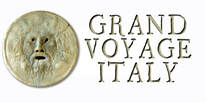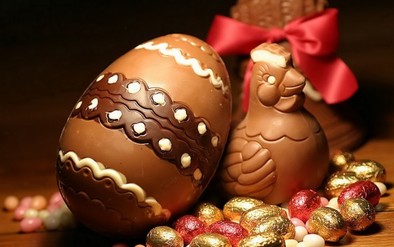 Typically, there are no Easter egg hunts in Italy, but nowadays you will find Il Coniglietto di Pasqua (the Easter Bunny) and hollow chocolate eggs with a surprise gift inside. There are also Pannetone and Colomba (dove shaped) breads given as presents when visiting relatives. Pasqua is the second biggest holiday, just behind Christmas. But the days leading up to Easter include solemn processions, masses, and celebrations in virtually every region of Italy, each having its own traditions. La Pasquetta, the Monday after Easter Sunday, although not a national holiday, is a public holiday throughout Italy where families stay home from work, enjoy good food and exchange gifts of chocolates. 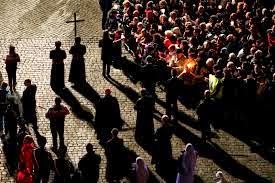 Good Friday and the Via Crucis with the Pope On Good Friday evening, the Pope celebrates the Via Crucis (Stations of the Cross) in Rome at the Colosseum. Mimicking the Passion of the Christ, a huge cross with burning torches lights the sky as the stations of the cross are described in several languages. At the end, the Pope gives his blessing. There have been younger Popes who have carried the cross during the procession. Easter Mass at St. Peter's Square In virtually every church in Italy an Easter mass is held. The Pope himself officiates at the Easter mass at Saint Peter's Basilica in Rome. Although tickets are free, people wanting to attend the mass at St. Peters Square need to order tickets to this mass 2-6 months in advance. Florence and the Scoppio del Carro on Easter Sunday On Easter Sunday in Florence, the Scoppio del Carro (Explosion of the cart) is the event to attend. A tall, decorated cart is pulled by white oxen until it reaches the Basilica di Santa Maria del Fiore in Florence's historic center. Immediately after East Mass is completed, the Archbishop shoots a rocket into the fireworks-filled cart, creating a terrific pyrotechnics display. Afterwards there are displays with people dressed in medieval costumes. 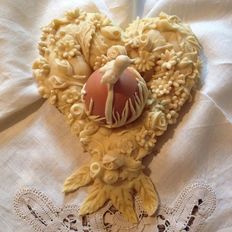 Sardinian celebration breads are amazing works of art Sardinian celebration breads are amazing works of art Sardinia's Holy Week The island of Sardinia is a part of Italy steeped in tradition and influences from other lands and cultures. Some of its Easter traditions have evolved from the Spanish Catalan, Semana Santa, such as the Riti della Settimana Santa in Alghero. The celebrations last for a week with different processions and festivities each day coming ending the final day with fireworks. If you're still in Sardinia the second Sunday after Easter, check out the Torrone (Nougat) Festival’ in Tonara--just done tell your dentist! As an example of the uniqueness of celebrations in small towns, the Umbrian hill town of Panicale, celebrates with cheese on La Pasquetta. The game of Ruzzolone is a competition with elements of bocce, bowling and even yo-yo. This game has been played for over 2000 years. The giocattori (players) attach a large, leather strap around a nine pound wheel of pecorino cheese and in yo-yo or sling-shot fashion, launch the cheese wheel through the streets that wrap around the village walls. In the piazza afterwards, there is music, dancing, wine--and of course--cheese! 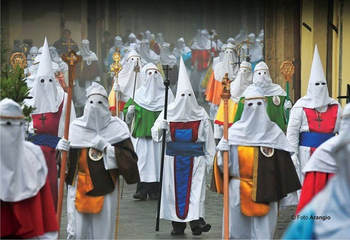 Enna, in Sicily, has a series of events and processions during the entire Easter season. On Palm Sunday, the brothers put on a live scene of Jesus’ arrival to Jerusalem on the Papardura Sanctuary, clinging to the side of the mountain, with olive branches and palms gracing the path. 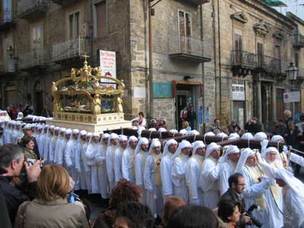 On Wednesday, a singing mass is held, while the members of the confraternities take over local taverns in the historic center, filling it a party atmosphere. On Holy Thursday, there is a foot washing ritual and pilgrimages that last into the night. On Good Friday, more than 2,000 friars dressed in ancient costumes walking through the streets of the city. The statue of the Holy Mary is carried by dozens to the Cathedral with the brotherhood entering the church to pay their respect to Christ. In the evening, the longest parade in Sicily starts, with all confraternities taking part, all wearing hoods of penitence and carrying torches. --GVI Confraternities of Penitents or Congrèe in Italian, are Roman Catholic religious groups, with bylaws prescribing various penitential works. Beginning in the mid 12th century, a members of these brotherhoods were referred to as converso, Church laymen who had made a "conversion of life" and were affiliated to a monastic order as lay brothers. 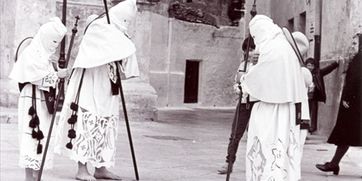 Penitents, also called Addolorati, are those who adopted asceticism, of which there are two types. "Natural asceticism" is a lifestyle with lessened material aspects, fasting, refraining from sexual relations without actually entering a monastery. "Unnatural asceticism" includes self infliction of pain or flagellation. These Penitents lived fairly normal lives, while adhering to rules against blasphemy, gambling, drunkenness, and womanizing. In 1227 Pope Gregory IX recognized his "Brothers and Sisters of Penance". As with today, most penitent confraternities were involved in charitable activity and considered benefactors to both Church and their local communities. 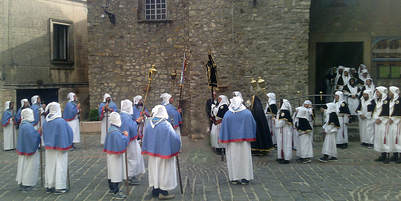 In the past as well as today, the penitent brothers are known for wearing robes and pointed hoods during public processions on Catholic holy days, such as Good Friday, to hide their identities, both for purposes of hiding their sinfulness and providing anonymity for their charitable works. I feel it must be pointed out (unintended pun here), that these are good-hearted, devout Catholics. Although their pointed caps and white robes (there are other sects throughout Europe with other colors: black, red, blue, etc.) repulse most Americans, the similar garb worn by the extreme racist members of the Ku Klux Klan and these pious Catholic brotherhoods have absolutely nothing in common with each other. The Klan sides with the Devil... the Penitents with God... --Jerry Finzi Enna, Sicily
|
On AMAZON:
|

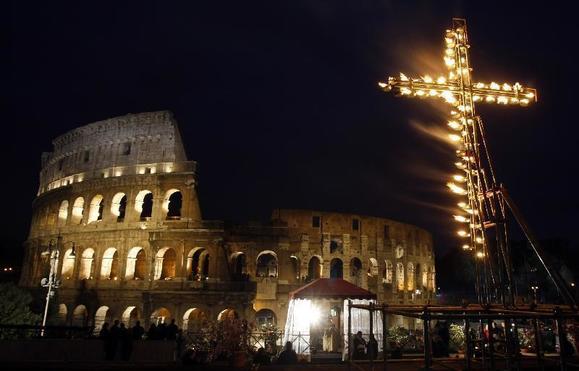

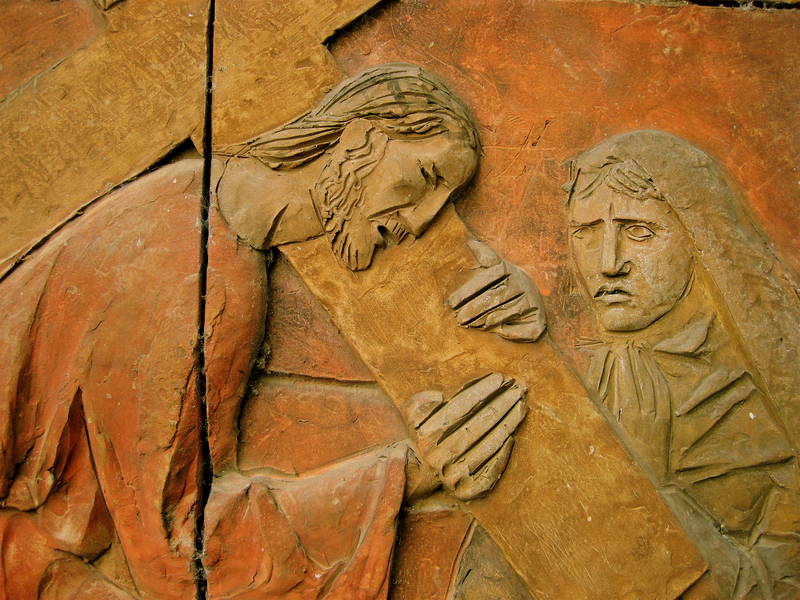
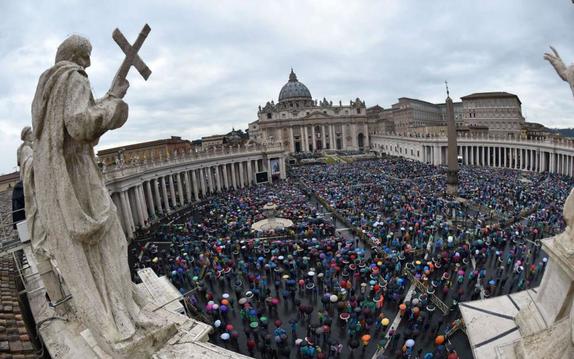
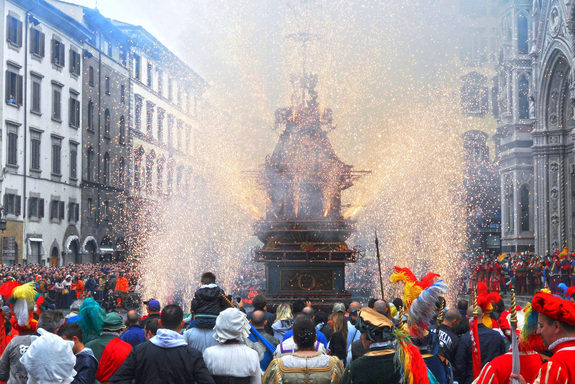
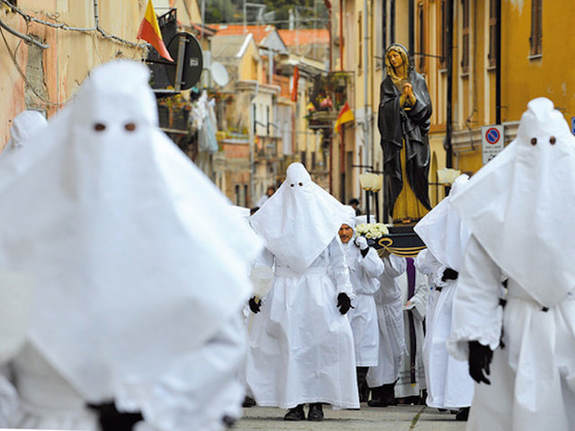
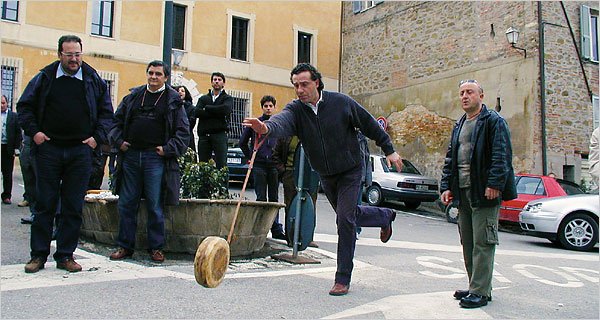
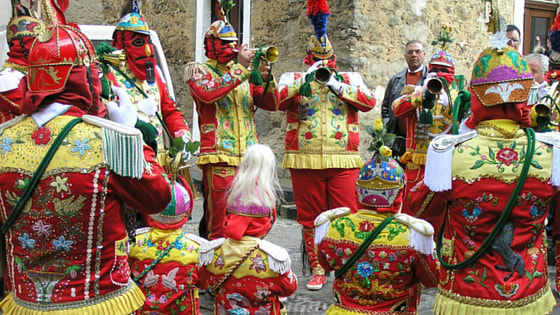
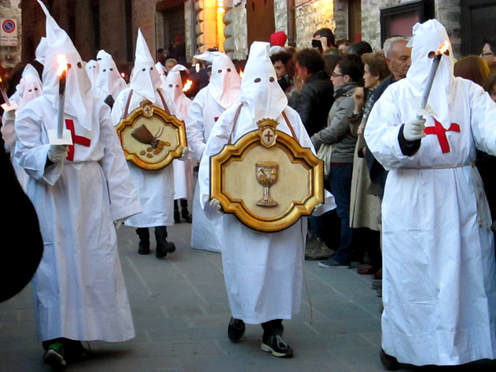
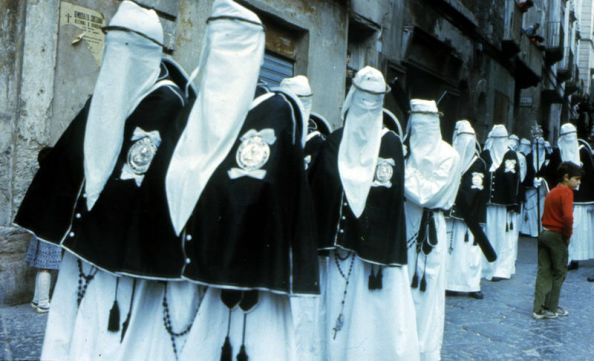
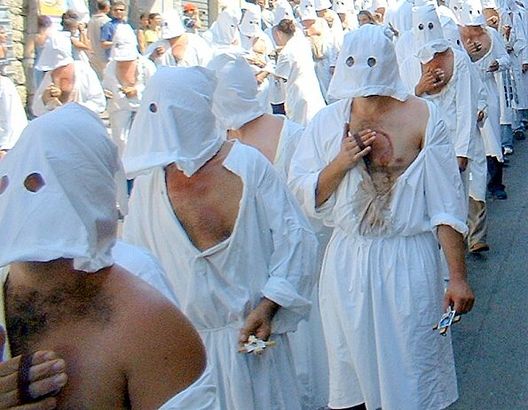
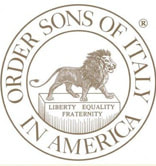
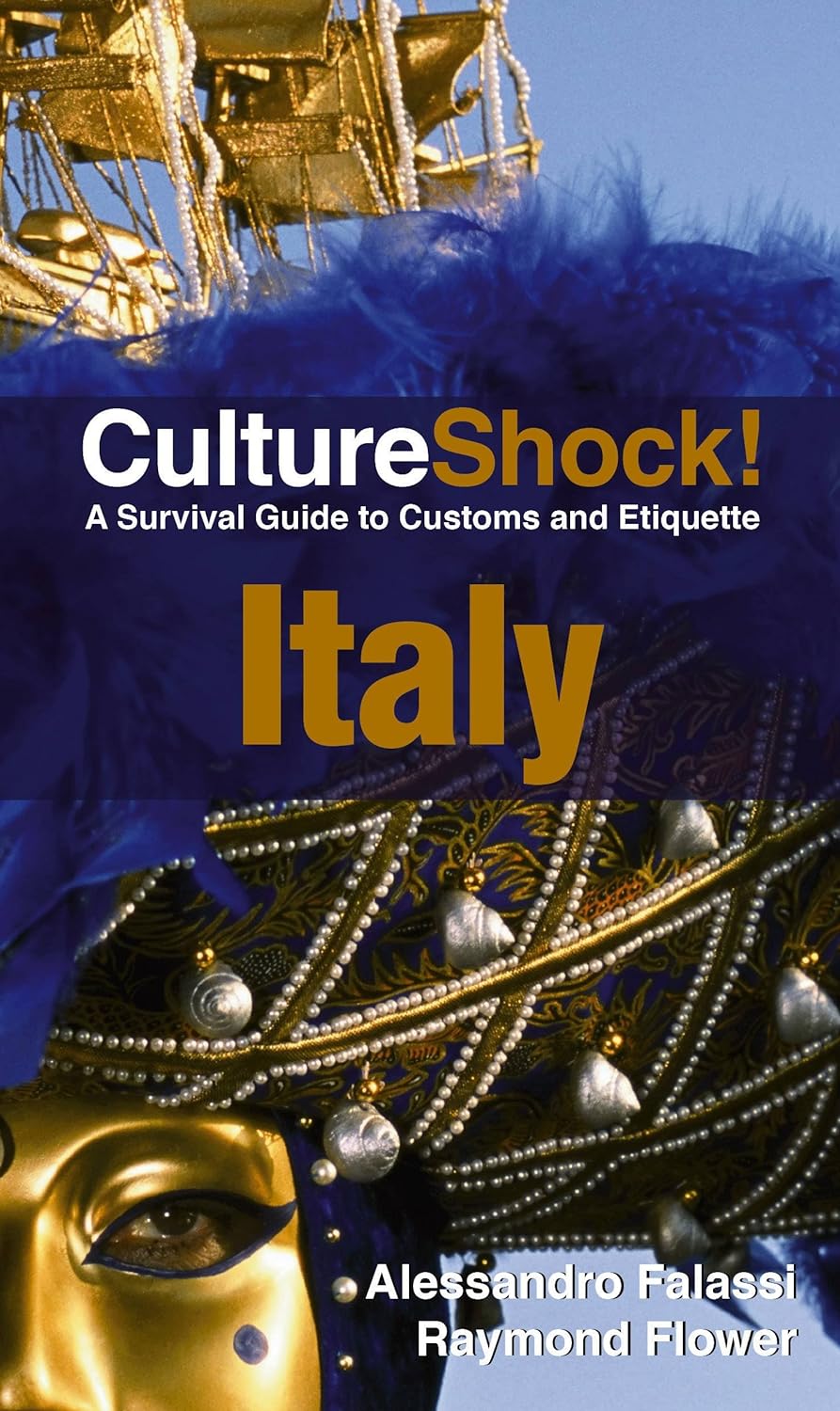
 RSS Feed
RSS Feed

